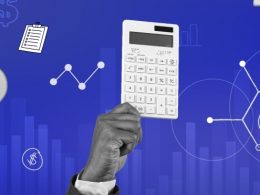Tax refunds are highly anticipated by individuals and businesses during tax season. These refunds serve as a reimbursement of excess taxes paid to the government throughout the year and can provide a much-needed financial boost. However, it’s essential to have a clear understanding of the timeframe for receiving a tax refund in order to effectively plan ahead. In this article, we will delve into the various factors that can influence the processing time of tax refunds and offer valuable tips to expedite the refund process.
If taxpayers are aware of the factors that impact the processing time of tax refunds, they can better manage their expectations and make informed decisions. We’ll examine variables such as the chosen filing method (electronic or paper), the accuracy of the return, the completeness of documentation, and special circumstances that may affect refund processing. Additionally, we’ll provide practical suggestions on how to speed up the refund process, ensuring taxpayers receive their funds promptly.
What is a tax refund?
A tax refund refers to a reimbursement of excess taxes paid to the government during a specific tax period. When individuals or businesses pay their taxes throughout the year, they may end up paying more than what they owe based on their taxable income, deductions, and credits. The tax refund is the amount that exceeds the actual tax liability, and it is returned to the taxpayer by the tax authorities.
Tax refunds typically occur when the total amount of taxes withheld from an individual’s income or the estimated tax payments made throughout the year exceeds their actual tax liability. Similarly, businesses may receive a tax refund if their tax credits or deductions result in an overpayment of taxes.
To claim a tax refund, individuals and businesses need to file their tax returns accurately and report their income, deductions, and credits. The tax authorities then review the return, verify the information provided, and calculate the correct tax liability. If the calculated tax liability is less than the amount already paid, the excess amount is refunded to the taxpayer.
Receiving a tax refund can provide a financial boost, allowing individuals and businesses to use the refunded amount for various purposes such as paying off debts, saving, or making purchases. It is important to note that the availability and amount of a tax refund depend on the specific tax laws and regulations of each jurisdiction.
If you find that the refund amount you received is different from what you expected, it could be due to changes made by the IRS to your tax return. These changes may include corrections to Recovery Rebate Credit or Child Tax Credit amounts, or offsetting the refund against any past-due taxes or debts. For more details, you can refer to the Tax Season Refunds Frequently Asked Questions on the IRS website or contact them directly.
It’s important to note that refunds can only be directly deposited into U.S. bank accounts or U.S. bank-affiliated accounts held in your name or jointly with your spouse. Prepaid debit cards may also be used for direct deposit, but it’s advisable to check with the financial institution to confirm compatibility and obtain the correct routing and account numbers. Please keep in mind that you can deposit no more than three electronic refunds into one financial account or a prepaid debit card. Exceeding this limit will result in an IRS notice and a paper refund.
Who can claim a tax refund?
A tax refund can be claimed by individuals and businesses that have overpaid their taxes throughout a specific tax period. Here are some common scenarios in which taxpayers may be eligible to claim a tax refund:
- Individuals with earned income: Employees who have income subject to withholding, such as wages or salaries, may be eligible for a tax refund if the amount withheld from their paychecks exceeds their actual tax liability. This often occurs when taxpayers have too much tax withheld throughout the year.
- Self-employed iIndividuals: Self-employed individuals who make estimated tax payments or have tax withheld from their income may also be eligible for a tax refund if their payments exceed their tax liability. This can happen if they overestimate their tax liability or if they are eligible for deductions and credits that reduce their tax liability.
- Business entities: Corporations, partnerships, limited liability companies (LLCs), and other business entities may be eligible for a tax refund if their tax payments exceed their tax liability. This can happen due to various factors, including deductions, credits, and overpayments made during estimated tax payments.
- Individuals eligible for tax credits: Taxpayers who qualify for certain tax credits, such as the Earned Income Tax Credit (EITC), Child Tax Credit, or Education Credits, may be eligible for a tax refund if the credits exceed their tax liability. These credits can result in a refund even if the taxpayer had little or no tax withheld from their income.
It’s important to note that the eligibility criteria for tax refunds vary depending on the specific tax laws and regulations of each jurisdiction. Taxpayers should consult the tax authority or seek professional tax advice to determine their eligibility for a tax refund based on their individual circumstances.
Documents you may need
When preparing your tax return, it is essential to gather all the necessary documents to ensure accurate reporting and maximize your chances of receiving a tax refund. While the specific documents required may vary based on your individual circumstances, here is a comprehensive list of common documents you may need for filing your tax refund:
Personal information
- Social Security numbers (including those of your spouse and dependents)
- Date of birth for all individuals included on the return
Income documents
- W-2 forms for wages earned from employers
- 1099 forms for income received from freelance work, self-employment, or contract work
- Form 1040NR, a “U.S. Nonresident Alien Income Tax Return,” for aliens who have got income from United States sources.
- 1099-INT and 1099-DIV forms for dividend income and interest
- 1099-G form for any unemployment compensation received
- K-1 forms for income from partnerships, trusts, or S corporations
- Documentation of any other taxable income received during the year
Deduction and credit documents
- Form 1098 for mortgage interest paid
- Property tax records
- Receipts and records of qualified educational expenses
- Medical expense records
- Documentation of charitable contributions made
- Receipts for unreimbursed business expenses
- Records of any other eligible deductions or credits
Health insurance
- Form 1095-A, 1095-B, or 1095-C, which provide information about your health insurance coverage during the tax year
Retirement and investment accounts
- Form 1099-R for distributions from retirement accounts
- Annual statements for IRAs, 401(k)s, or other retirement plans
- Documentation of contributions made to retirement accounts
- Brokerage or investment account statements for capital gains or losses
Business and self-employment
- Profit and loss statements for self-employed individuals
- Business expense receipts and records
- Records of estimated tax payments made
Other documents
- Previous year’s tax return (for reference and to carry forward any relevant information)
- Bank account details for directly depositing of your refund
- Any correspondence or notices received from tax authorities
It’s important to note that this list is not exhaustive, and additional documents may be required based on your specific tax situation. It is advisable to consult with a tax professional or refer to the official tax authority’s guidelines to ensure you have all the necessary documents for your tax refund.
When to expect your tax refund
The IRS typically issues refunds for the majority of taxpayers in under 21 days. However, it’s important to note that certain factors may require additional review of your tax return, potentially extending the processing time.
For faster refunds, it’s recommended to choose direct deposit as your refund method when e-filing. Direct deposit is considered the easiest, safest, and fastest way to receive your refund. You can provide your account number and routing number through your tax software or inform your tax preparer of your preference for direct deposit. Even if you file by paper, you can still opt for direct deposit. Ensure that you double-check the accuracy of your routing and account numbers to avoid errors.
If you filed a Form 1040NR to request a refund of tax withheld on a Form 1042-S (Foreign Person’s U.S. Source Income Subject to Withholding), please allow up to six months or longer from the original due date of the 1040NR return or the date you filed it (whichever is later) to receive any refund due. This additional time is necessary to process the return.
Check out how to avoid getting tax audited by the IRS.
Processing time frames for different methods to file return of taxes
Electronic filing
Electronic filing is the preferred method for most taxpayers due to its speed and efficiency. The IRS and many tax preparation software programs offer e-filing options, making it convenient for taxpayers. On average, refunds from electronically filed returns are processed within three weeks. E-filing also allows taxpayers to track the status of their refund using online tools provided by tax authorities.
Paper filing
Paper filing involves physically mailing your tax return to the IRS. Paper returns require manual processing, which takes longer compared to electronic filing. Generally, refunds from paper returns are processed within six to eight weeks. However, factors such as high volume during peak tax season or errors in the return can further delay the processing of paper returns.
Factors affecting tax refund processing time
Identity verification process
In some cases, the IRS may require additional identity verification before processing a tax refund. This can occur if there are discrepancies or suspicious activities associated with your tax return. If selected for verification, the processing of your refund will be delayed until the identity verification process is completed. The IRS provides instructions on how to verify your identity if you are flagged for this process.
Claiming certain tax credits or deductions
Claiming certain tax credits or deductions can also impact the processing time of your refund. Some credits, such as the Earned Income Tax Credit (EITC) or the Additional Child Tax Credit (ACTC), are subject to additional review and verification processes. As a result, refunds associated with these credits often experience delays compared to other refunds.
Amended returns and their processing time frames
If you need to amend a previously filed tax return, the processing time for your refund will be different. Amended returns require manual processing and often take longer to process than original returns. The processing time for amended returns can range from eight to twelve weeks or longer, depending on the complexity of the changes made.
Filing method
The method you choose to file your tax return can significantly impact the processing time of your refund. Electronic filing, or e-filing, is generally faster compared to filing a paper return. E-filing allows for automated data processing, reducing the chance of errors and expediting the refund process. On the other hand, paper returns require manual processing, which can take longer.
Accuracy of the return
The accuracy of your tax return plays a crucial role in determining the processing time for your refund. If your return contains errors or inconsistencies, it may be flagged for further review, causing delays in processing. It is essential to double-check your return for accuracy and ensure that all information is correct and complete before submitting it.
Completeness of documentation
Submitting complete and accurate documentation is vital for a smooth refund process. If your return is missing essential supporting documents or forms, the processing of your refund may be delayed. Make sure to include all necessary schedules, statements, and receipts required to support your claimed deductions or credits.
Additional forms or schedules attached
If you attach additional forms or schedules to your tax return, it may increase the processing time. These additional forms may require further review and verification, which can prolong the refund process. It is recommended to only include necessary supporting documents and avoid attaching unnecessary forms that do not apply to your situation.

Impact of errors or incomplete documentation
Common errors that may delay refund processing
Several common errors can lead to delays in refund processing. These include incorrect Social Security numbers, mathematical errors, mismatched names and Social Security numbers, or forgetting to sign the return. It is crucial to review your return carefully to ensure accuracy and avoid these common errors that may hold up your refund.
How to avoid errors and ensure timely processing
To avoid errors and ensure timely processing, consider using tax preparation software that can help minimize mistakes. Double-check all entries, especially numbers, names, and Social Security numbers. Keep accurate records and maintain organized documentation to support your claimed deductions or credits. Taking these precautions can significantly reduce the chances of errors that may delay your refund.
Tools to help you avoid errors during tax season
Ultimately, hassle-free tax season depends on how accurate and clean your books are, that’s why avoiding errors in accounting is a key factor in managing an ecommerce business. And you can get it using Synder, accounting software for automated error-free syncing of transaction data from your sales channel(s) and payment gateway(s) into your books either in the form of one generalized daily summary record for each connected platform or a per-transaction record, featuring detailed transaction data.
If you’ve got lots of historical data and need to create your books from scratch, Synder allows you to import loads of historical transactions with no cap on how far back you can go – you’re only limited by the platforms you use.
Synder’s major advantage is that the software double-checks everything for duplicate entries or discrepancies. Smart duplicate detection mechanism ensures that no errors sneak into your accounting.
It also has a unique rollback feature which can help you restore the books if you don’t like the synchronization results. You can roll back erroneous transactions either one by one or in bulk. This way, Synder guarantees your books stay clean and ready for a seamless reconciliation and smooth tax season.
To experience Synder’s functionality, sign up for a 15-day free trial or spare a seat at a webinar with a Synder support specialist for a guided tour.
Tax preparation software
Tax preparation software has become increasingly popular as a convenient and efficient way to prepare and file tax returns, including for the purpose of claiming tax refunds. These software options guide taxpayers through the process of entering their financial information, applying relevant deductions and credits, and generating accurate tax returns. Here are some well-known tax preparation software options that can help you navigate the tax refund process:
- TurboTax: TurboTax is one of the most widely used tax preparation software. It offers a user-friendly interface, step-by-step guidance, and various versions tailored to different tax situations, from basic returns to more complex filings. TurboTax ensures accurate calculations and helps users identify potential deductions and credits to maximize their refunds.
- H&R Block: H&R Block’s tax preparation software is another popular choice. It provides comprehensive tools and support for various tax scenarios, including self-employment income, investments, and rental properties. H&R Block’s software offers assistance from tax professionals, extensive questionnaires, and a user-friendly interface to help users claim their tax refunds accurately.
- TaxAct: TaxAct offers a range of software options, including free and paid versions, to accommodate different tax situations. Its software provides step-by-step guidance and allows users to import previous tax return data from other software. TaxAct emphasizes affordability while ensuring accurate calculations and helping users identify potential refund-boosting deductions and credits.
- Credit Karma Tax: Credit Karma Tax is a free tax preparation software that covers a wide range of tax scenarios, including simple and complex returns. It provides a straightforward interface and guidance throughout the filing process, helping users claim their tax refunds accurately. Credit Karma Tax also offers free federal and state e-filing options.
- TaxSlayer: TaxSlayer offers user-friendly tax preparation software with multiple versions, from basic to advanced. It provides comprehensive support for various tax situations, including self-employment, investments, and rental properties. TaxSlayer’s software ensures accurate calculations and provides tools to identify potential deductions and credits to optimize tax refunds.
Also check out how Synder simplifies tracking sales and taxes by countries and states.
Importance of providing complete documentation
Providing complete and accurate documentation is essential for a smooth refund process. Ensure that you include all necessary forms, schedules, and supporting documents required for your specific tax situation. Failure to provide complete documentation may result in delays as the IRS may need to request additional information or clarification before processing your refund.
Ways to check the status of a Tax Refund
Online tools provided by tax authorities
Tax authorities, such as the IRS, offer online tools to check the status of your tax refund. These tools provide real-time updates and are accessible through their official websites. You will typically need your Social Security number, filing status, and the exact refund amount to use these online tracking tools, for example, “Where’s My Refund?” tool, which provides the most up-to-date information. The tool is updated daily, eliminating the need for frequent checks.
The timing for accessing refund information depends on the method of filing and the tax year. Generally, you can check the status 24 hours after e-filing a tax year 2022 return, 3 or 4 days after e-filing a tax year 2021 or 2020 return, and four weeks or more after you file a paper return. The tool displays three stages of progress: (1) Return Received, (2) Refund Approved, and (3) Refund Sent. It will provide an actual refund date once the IRS processes your return and approves the refund.
Contacting the tax authority directly
If you prefer a more personalized approach, you can contact the tax authority directly to inquire about the status of your refund. The IRS has a dedicated hotline for refund inquiries, and their representatives can provide you with updates or assistance regarding your refund.
Using mobile apps for refund tracking
Many tax preparation software companies provide mobile apps that allow taxpayers to track the status of their refunds on their smartphones. These apps provide convenience and accessibility, allowing you to stay updated on your refund’s progress wherever you are.
Tips for speeding up refund processing
Filing electronically
As mentioned earlier, electronic filing is the fastest way to receive your refund. By e-filing your return, you can significantly reduce the processing time and expedite your refund.
E-filing with direct deposit
Opting for direct deposit is another effective way to speed up your refund process. Instead of receiving a paper check in the mail, direct deposit allows the refund to be electronically transferred directly into your bank account. This eliminates the additional time it takes for a physical check to be processed and delivered.
Want to learn more? Explore our detailed article to understand how ACH credits work.
Double-checking the return for accuracy
Take the time to thoroughly review your tax return for any errors or inconsistencies. Carefully check all the information, including names, Social Security numbers, and numbers entered on the return. By minimizing errors, you can avoid delays caused by additional reviews or corrections.
Ensuring complete and proper documentation
Include all necessary forms, schedules, and supporting documentation with your tax return. Double-check that everything is accurate, organized, and attached in the correct order. This helps ensure a smooth and timely refund process without the need for additional requests for documentation.
Avoiding common errors
Be mindful of common errors that can delay your refund, such as incorrect Social Security numbers, mathematical mistakes, or missing signatures. Take the time to review your return before submission and use resources like tax preparation software to minimize errors.
Final words
In conclusion, understanding the factors that influence the processing time of tax refunds is crucial for individuals and businesses alike. By considering elements such as the filing method, accuracy of the return, completeness of documentation, and special circumstances, taxpayers can gain valuable insights into the expected processing time for their refunds.
To make the refund process shorter, taxpayers should take advantage of tips such as e-filing, opting for direct deposit, and double-checking the accuracy of their returns. These measures can significantly speed up the refund timeline and provide a more efficient experience. Additionally, staying informed and utilizing available resources like tax preparation software and mobile apps for refund tracking can offer convenient tools and real-time updates, keeping taxpayers well-informed throughout the process.
Understanding and managing the factors that affect tax refund processing time, individuals and businesses can navigate the system more effectively, potentially resulting in faster refunds. Maintaining organization, accuracy, and open communication with tax authorities can contribute to a smoother tax refund experience overall.
Also read about how to file income tax return.

.png)





Thanks for the article!